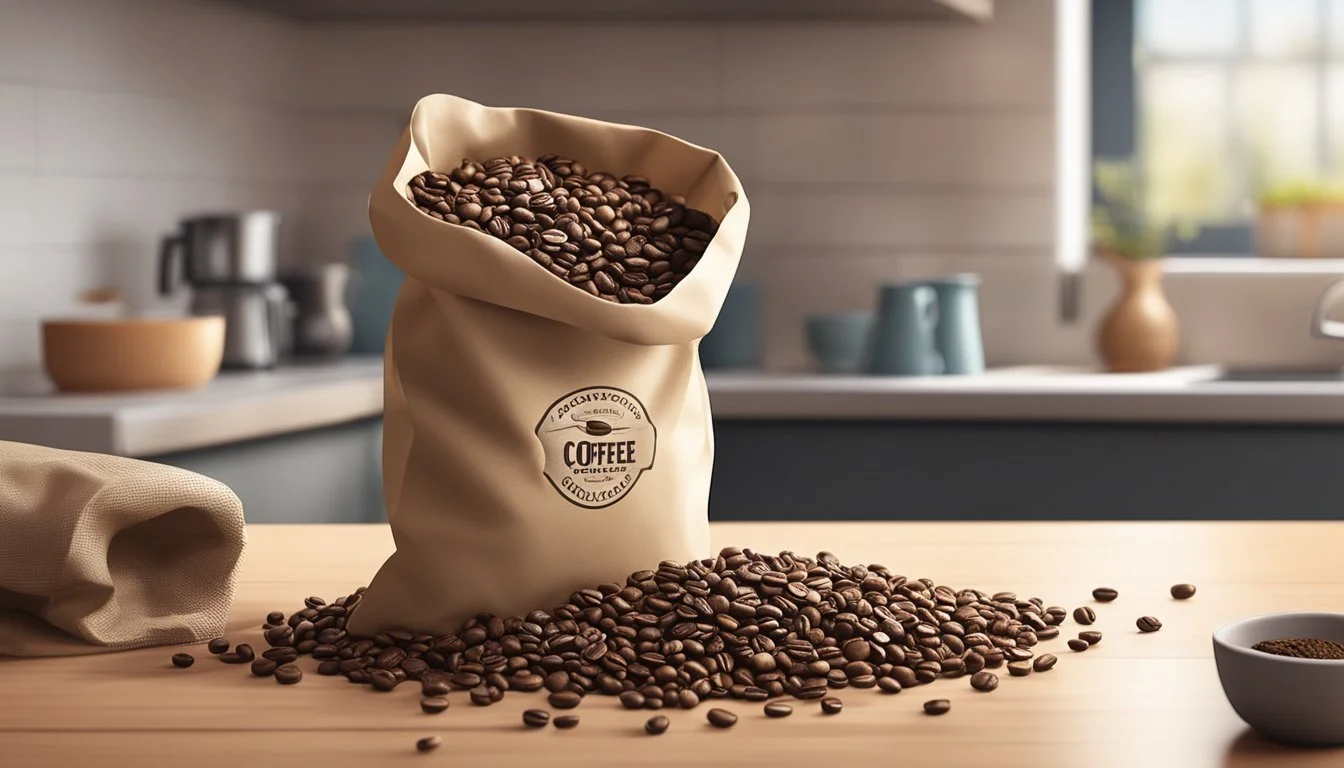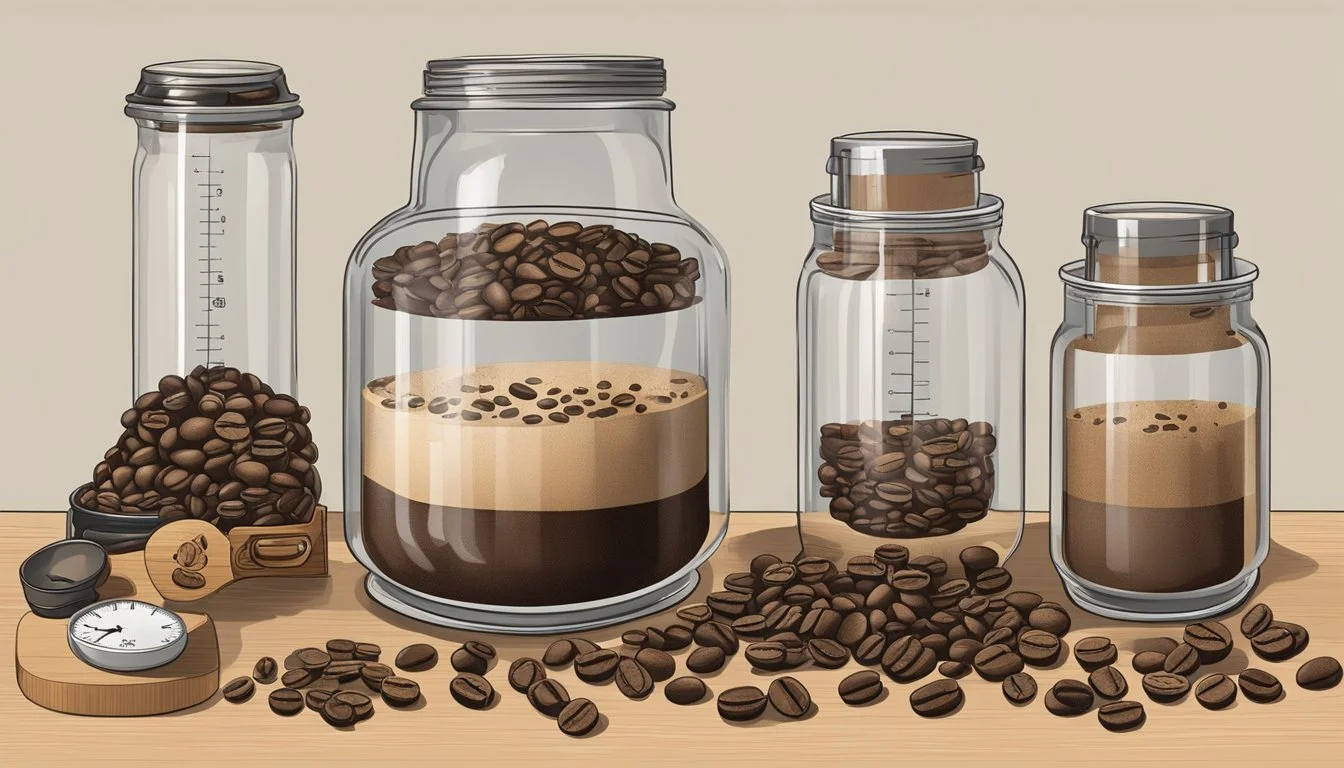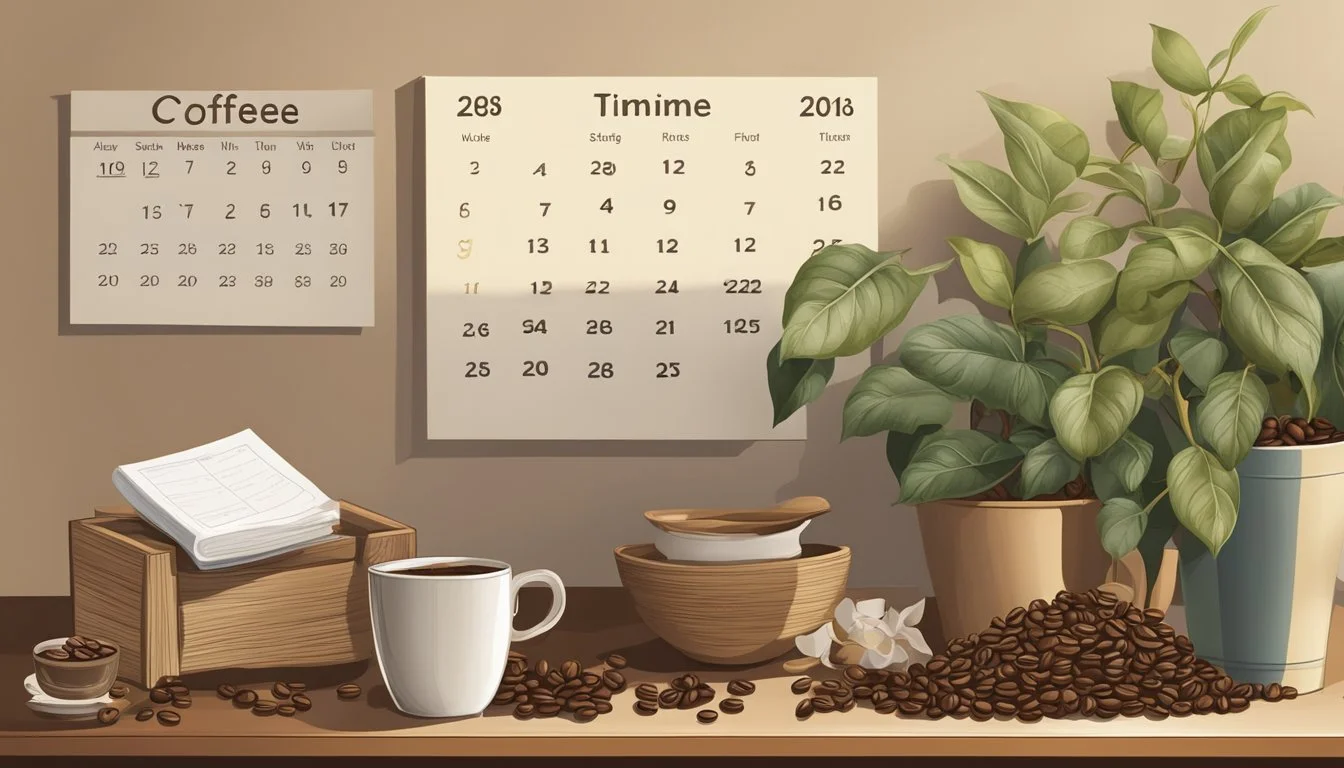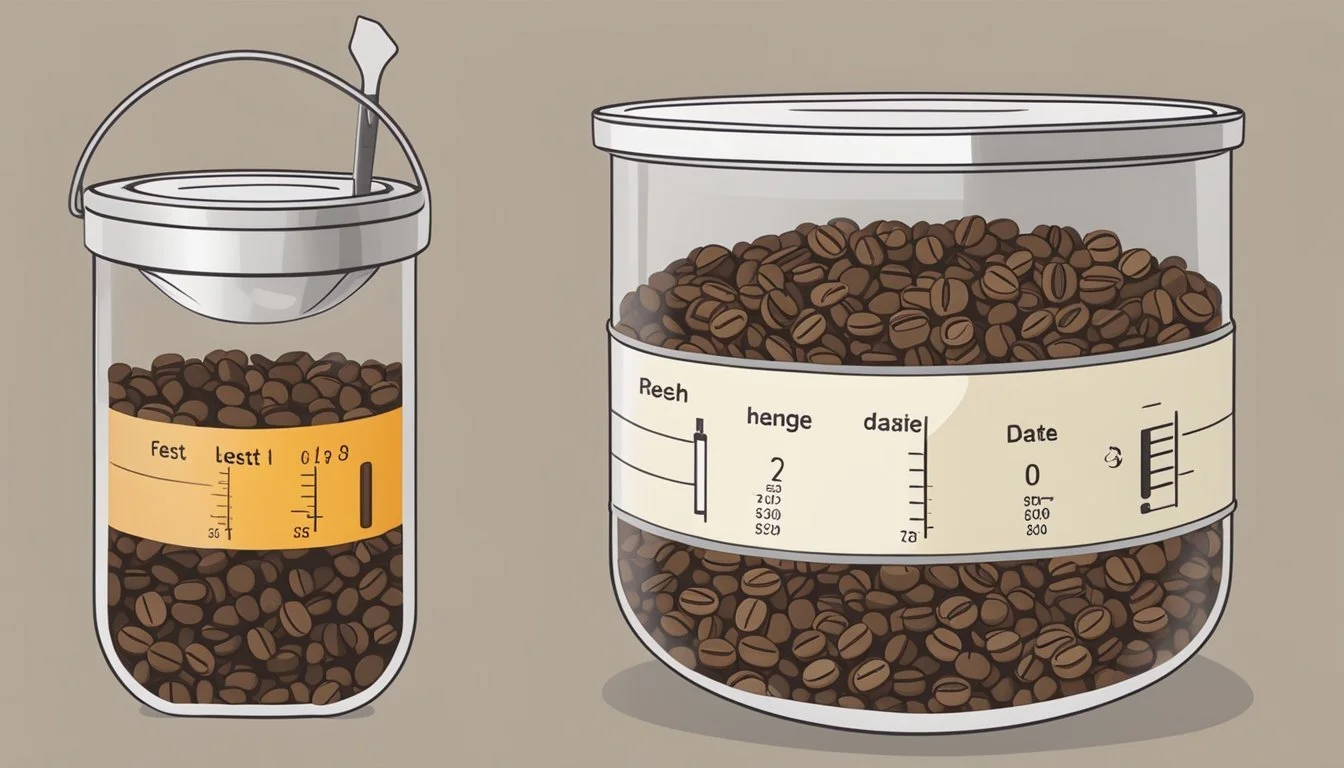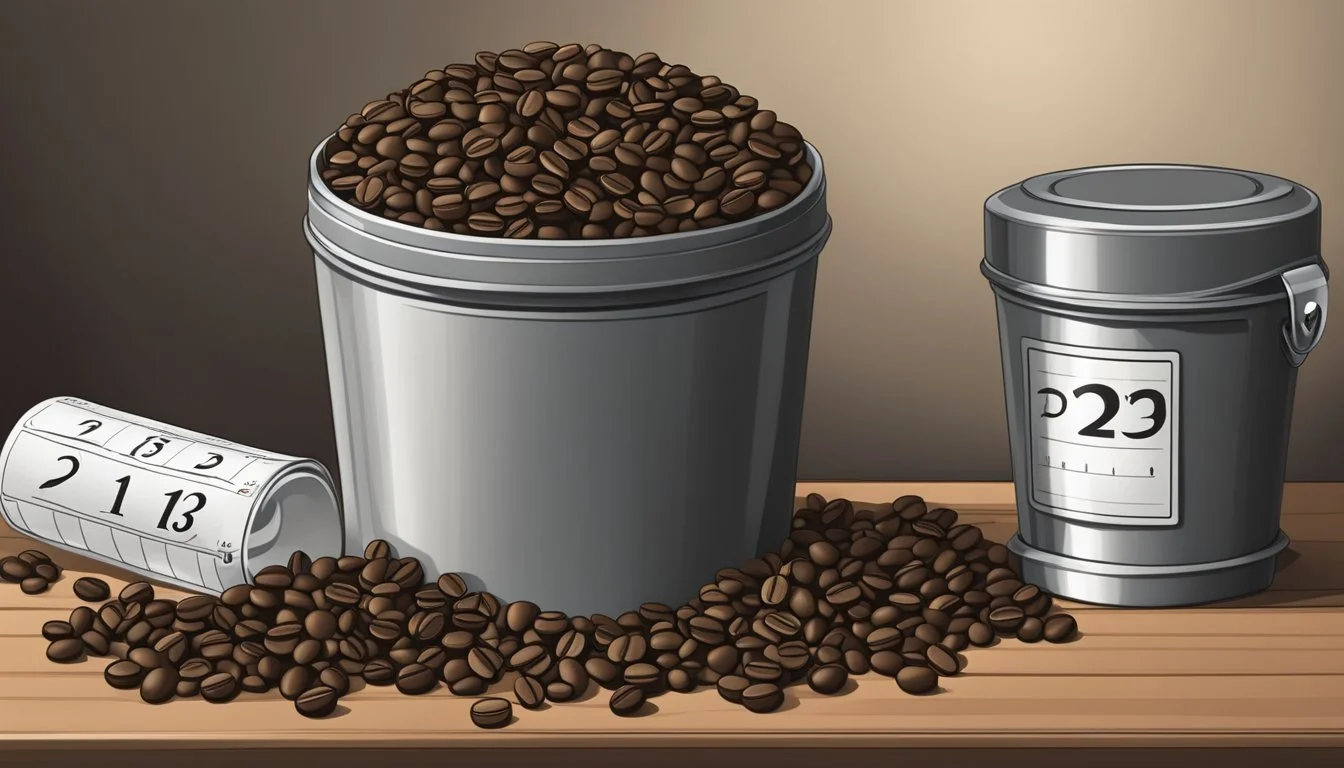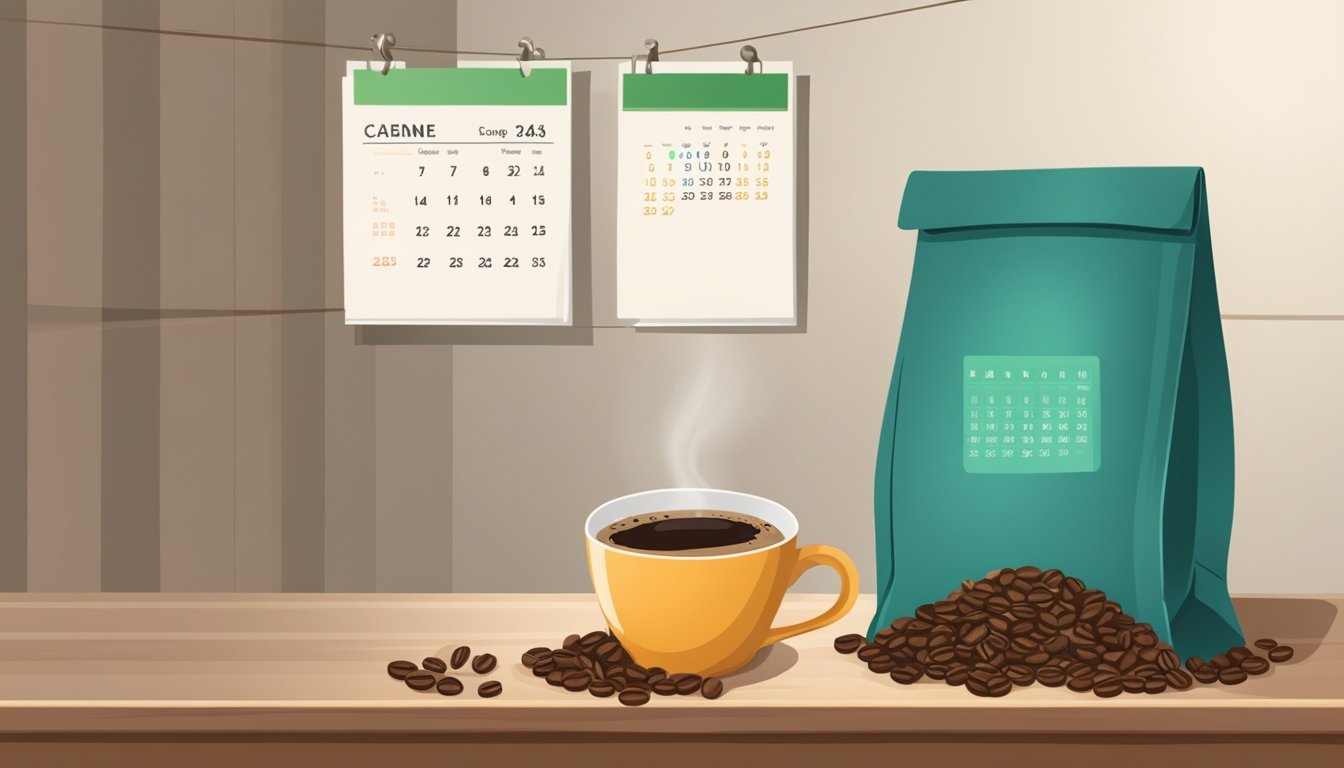How Long Do Coffee Beans Last?
Understanding Shelf Life and Freshness
The longevity of coffee beans (how long do coffee beans last?) is an integral factor for enthusiasts and casual drinkers alike who aim to preserve the rich flavor and freshness that a good cup of coffee promises. Typically, roasted whole coffee beans retain their optimal flavor profile for up to 2-3 months when stored correctly. The shelf life of coffee beans can vary, influenced by factors such as the roast date, packaging, and storage conditions.
Proper storage plays a crucial role in extending the freshness of coffee beans. An airtight container, away from light and moisture, is essential for maintaining the beans' quality. Preservation of the coffee beans' integrity involves keeping them in a cool, dark place, as these conditions help in slowing the staling process.
While the precise shelf life can depend on the specific type of coffee and its roast, coffee beans are generally consumable for weeks to several months. However, for a premium experience, it is advisable to use coffee beans within 30 days of their roast date as this period ensures a more robust flavor profile and a fresher taste in the cup.
Understanding Coffee Bean Freshness
Freshness is a critical factor in the taste and aroma of coffee beans, with the roast date serving as a primary indicator of quality. One's sensory experience of coffee is profoundly impacted by how recently the beans were roasted.
Factors Affecting Freshness
Several factors contribute to the freshness of coffee beans:
Exposure to Air: When coffee beans are exposed to air, oxidation occurs, which deteriorates the beans' flavor and aroma over time.
Moisture: Humidity can cause mold and mildew, negatively affecting the beans' freshness.
Light: Direct sunlight or bright light can degrade the quality of coffee beans, leading to stale taste.
Temperature: Fluctuations can accelerate the loss of freshness, so a stable, cool environment is recommended for storage.
Proper storage plays a pivotal role in maintaining freshness, with airtight containers away from light and heat being the best practice.
The Role of Roast Date
Roast Date: This is the day the coffee beans were roasted, which is essential to their freshness. The closer one uses the coffee after this date, the better the flavor and aroma.
A fresh roast exhibits a vibrant, robust flavor profile, whereas older roasted beans lose intensity and complexity. Experts often suggest consuming coffee beans within 30 days of their roast date for the best sensory experience.
The Science of Coffee Degradation
Coffee beans can quickly lose their freshness and flavor through various chemical and physical processes. Understanding these processes is crucial to maintaining the quality of coffee.
Oxidation and Staling
Oxidation is a key factor in the process that turns fresh coffee beans stale. Once coffee beans are roasted, their oils are exposed to oxygen in the air. This exposure initiates a reaction that gradually deteriorates the flavor compounds within the coffee.
Oxygen Exposure: Beans react with oxygen, leading to a loss of aromatic compounds.
Flavor Deterioration: Vital flavor profiles diminish as volatile compounds break down.
To mitigate this, it's essential to store coffee beans in an airtight container to slow down oxidation and preserve their freshness.
Moisture and Mold
Coffee beans are sensitive to moisture, which can accelerate the decay and lead to the development of mold. Proper storage conditions must be employed to prevent moisture buildup that can have deleterious effects on coffee beans.
Humidity Control: Excess moisture can cause mold growth and negatively affect bean quality.
Storage Solutions: Keeping coffee beans in a dry and cool environment can prevent accumulation of moisture and prolong their shelf life.
By understanding and controlling these factors, the degradation of coffee beans can be significantly delayed.
Optimal Storage Solutions
Effective storage is critical for maintaining the freshness and flavor of coffee beans. It revolves around controlling exposure to air, light, and temperature. Implementing the right storage solutions can significantly extend the shelf life of coffee beans.
The Importance of Airtight Containers
Storing coffee beans in airtight containers is vital to prevent oxidation, which diminishes flavor. A container with a one-way valve is preferred as it allows carbon dioxide to escape without letting air in. Materials like ceramic, glass, or non-reactive metal with opaque walls are ideal choices for storage.
Recommended: Opaque, airtight containers
Avoid: Containers with direct light exposure
Temperature and Light Considerations
Coffee beans should be kept in a cool, dark place. Cabinets away from the oven or any heat source help in preserving their quality. Consistent temperatures are preferred as fluctuations can cause condensation, impacting the beans' integrity.
Optimal Temperature: Room temperature (about 20°C or 68°F)
Light Exposure: Minimal to none
Freezing Coffee Beans
Freezing coffee beans can be effective for long-term storage if done properly. Beans should be stored in small portions in airtight containers to minimize air and moisture exposure. Beans can last for a month or more, but once thawed, they should not be refrozen.
Freezing: Use airtight containers or vacuum-sealed bags
Note: Do not refreeze after thawing
Shelf Life Variations
The shelf life of coffee beans is greatly influenced by their form—whether whole or ground—and the level of their roast. Proper storage is key to maintaining freshness over time.
Whole Beans vs. Ground Coffee
Whole Beans: Whole coffee beans tend to retain their freshness longer than ground coffee due to their reduced surface area, which slows oxidation rates. They typically maintain optimal flavor for 2-4 months once opened, but can last up to a year if kept in an unopened, vacuum-sealed bag and stored in a cool, dark place.
Storage: To prolong shelf life, store whole beans in an airtight container away from light and moisture.
Ground Coffee: Once coffee is ground, the increased surface area leads to a quicker loss of flavor and aroma due to faster oxidation. Ground coffee should ideally be used within one month of opening if one wishes to enjoy it at its peak quality.
Storage: Similar to whole beans, ground coffee benefits from storage in an airtight container, minimizing exposure to environmental factors.
Roast Levels and Shelf Life
Light Roasts: They often have a longer shelf life compared to darker roasts, as the oils within the beans are less exposed.
Dark Roasts: The oils in darkly roasted coffee beans are more pronounced and closer to the surface, which can speed up the degradation process when exposed to air, light, or moisture. However, proper storage in a cool, dark, and dry place can mitigate these effects to some extent.
Tip: Regardless of roast level, it's crucial to store coffee beans in conditions that minimize contact with air, heat, and light to preserve their quality.
Preventing Flavor Loss
To preserve the rich flavor of coffee beans, one must focus on reducing exposure to air and light and maintaining ideal storage conditions. These factors are crucial in preventing the degradation of coffee's complex flavor profile.
Minimizing Air and Light Exposure
Coffee beans are best kept away from air and light, as both can have detrimental effects on their flavor. Air exposure can lead to oxidation, which degrades the essential oils in the beans, while light can cause photooxidation, further accelerating the loss of quality. Here's how to protect them:
Storage containers: Use air-tight containers made of opaque materials to minimize contact with air and prevent light from reaching the beans.
Location: Store the container in a cool, dark place such as a pantry or cabinet.
Ideal Conditions for Coffee Preservation
Besides minimizing air and light exposure, other storage conditions play an influential role in preserving bean flavor:
Temperature: Coffee beans should be stored at a consistent, cool temperature. Extreme temperature fluctuations can harm beans’ flavor integrity.
Humidity: A moderate humidity level is optimal; too much moisture can encourage mold growth, while too little can dry out the beans.
Container location: An ideal place for an air-tight container is away from any strong odors, as beans can absorb smells, which may alter the intended flavor profile.
Recognizing Stale Coffee
Coffee enthusiasts agree that freshness is a pivotal factor in the quality of the coffee experience. Recognizing stale coffee involves discerning changes in the coffee beans' appearance, smell, and taste.
Appearance and Smell Indicators
Appearance: Stale beans lose their rich, glossy appearance as oils degrade. A dull, matte surface often indicates that the bean is no longer fresh.
Glossy and oily surface: Fresh beans
Dull and matte surface: Stale beans
Smell: A telling sign of staleness is the aroma emitted from the coffee beans. Fresh beans emit a strong, robust scent, while stale beans' aroma is noticeably diminished.
Strong, pungent aroma: Fresh beans
Weak or little aroma: Stale beans
Taste Profile Changes
The taste of coffee is impacted significantly as the beans age. Fresh beans should deliver a complex and nuanced flavor profile, reflecting their origin and roasting process. Conversely, stale beans often have a flat, less vibrant taste, with a noticeable absence of those nuanced flavors.
Vibrant, complex flavors: Fresh beans
Flat, diminished flavors: Stale beans
Decay in bean quality affects both the acidity, which becomes less pronounced, and the bitterness, which can become overpowering in stale coffee. If a coffee lacks the bright, lively character it once had, or an undesirable bitterness has taken the forefront, these are indicators that the coffee beans have become stale.
Health and Safety Concerns
When it comes to coffee beans, health and safety are paramount. Consumers must be aware of the potential for mold and bacteria growth in improperly stored coffee beans and understand the guidelines for safe consumption.
Mold and Bacteria Growth
Mold can develop on coffee beans that are exposed to moisture or stored in damp conditions. Green coffee beans (how long do green coffee beans last?) are particularly susceptible because they are not roasted and lack the dryness of roasted beans, which reduces mold occurrence. To prevent mold, one should store coffee beans in a dry, cool place, away from direct sunlight.
Visibility of Mold: Mold may appear as fuzzy white, green, or black spots.
Health Impact: Consuming moldy coffee beans can lead to health issues, so any beans showing signs of mold should be discarded immediately.
Safe Consumption Guidelines
To ensure that coffee beans stay fresh and are safe to consume, following strict storage guidelines is crucial.
Storage: Keep beans in airtight containers.
Location: Store at room temperature, away from heat and light.
Timeline:
Green Coffee Beans: Can last for months if kept dry and cool.
Roasted Coffee Beans: Best consumed within a few weeks to maintain flavor, though they remain safe to consume for several months.
Consumers should trust their senses; a loss of aroma, a bland taste, or any visible mold are indicators that the coffee beans may no longer be suitable for safe consumption. Regular inspection of coffee storage can prevent the ingestion of contaminated beans, ensuring both quality and health safety.
Advanced Storage Techniques
To maximize the shelf life and flavor preservation of coffee beans, advanced storage techniques such as vacuum-sealing and nitrogen flushing, along with the use of specifically designed containers, can be utilized. These methods provide an enhanced barrier against the common enemies of coffee freshness: air, moisture, and light.
Vacuum-Sealing and Nitrogen Flushing
Vacuum-sealed bags are designed to remove as much air as possible from the package, significantly reducing the oxygen exposure that can deteriorate the coffee beans. Manufacturers often incorporate nitrogen flushing—a process that involves replacing the oxygen inside the package with nitrogen gas to prevent oxidation and maintain freshness.
Vacuum-Sealed Bags: Prolong bean freshness by minimizing oxygen exposure
Nitrogen Flushing: Retards the aging process by displacing oxygen with nitrogen gas
These bags may also feature one-way valves, which allow gases from the coffee beans to escape without letting air in. This is especially important for freshly roasted beans that continue to release carbon dioxide.
Container Materials and Design
Choosing the right container for coffee storage is crucial. Opaque containers, as opposed to transparent ones, are essential in protecting beans from light, which can degrade the quality of the coffee.
Opaque Containers: Shield coffee beans from light, preserving their flavor and aroma.
Material choice matters as well. Containers made from non-porous materials such as glass, ceramic, or certain plastics can provide an airtight environment that keeps moisture at bay, thus preserving the beans' integrity.
Non-Porous Containers: Prevent moisture from affecting bean quality; can offer a tight seal.
Additionally, the design of these containers often integrates seals or locking mechanisms that ensure no air can intrude, which further maintains the beans' freshness for an extended period.
Maximizing Coffee Enjoyment
To truly appreciate coffee, one must not only select quality beans but also master the art of brewing. A discerning enthusiast ensures their beverage is characterized by freshness and optimal flavor profiles.
Choosing the Right Coffee
The cornerstone of a delightful coffee experience begins with the selection of fresh beans. One should opt for whole beans that can last up to a year if unopened and stored in a cool, dark place inside an airtight container. Once the seal is broken, aiming to utilize the beans within a month will help maintain their robust flavor and prevent the onset of a dull or bitter taste.
Brewing Freshness into Every Cup
Attention to the brewing process is crucial to ensure the freshness translates into the cup. For optimal results, one should grind beans immediately before brewing. This limits the potential for oxidation, which can lead to diminished taste. Each brewing method, whether drip, espresso or French press, will have specific grind requirements, and matching these can vastly improve the quality of the brewed coffee. Using water at the right temperature, typically between 195°F to 205°F, also ensures that the coffee does not become over-extracted and bitter.


